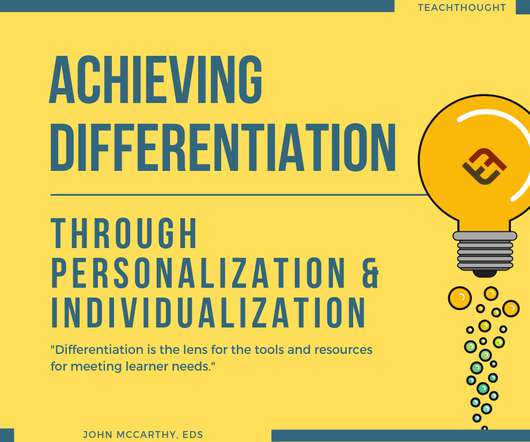Learning Styles: Fact or Fiction? What This Decades-Old Theory Can Teach Us
Waterford
OCTOBER 30, 2019
18] While educators have researched different models and provided various examples of learning styles since the 1970s, Fleming’s model is one that gained a lot of traction among teachers. An auditory learner, for example, may focus better while listening to an audiobook than they would while reading a book.























Let's personalize your content